A love letter to Brighton’s West Pier
There are many reasons to fall in love with Brighton, writes Sara Darling.
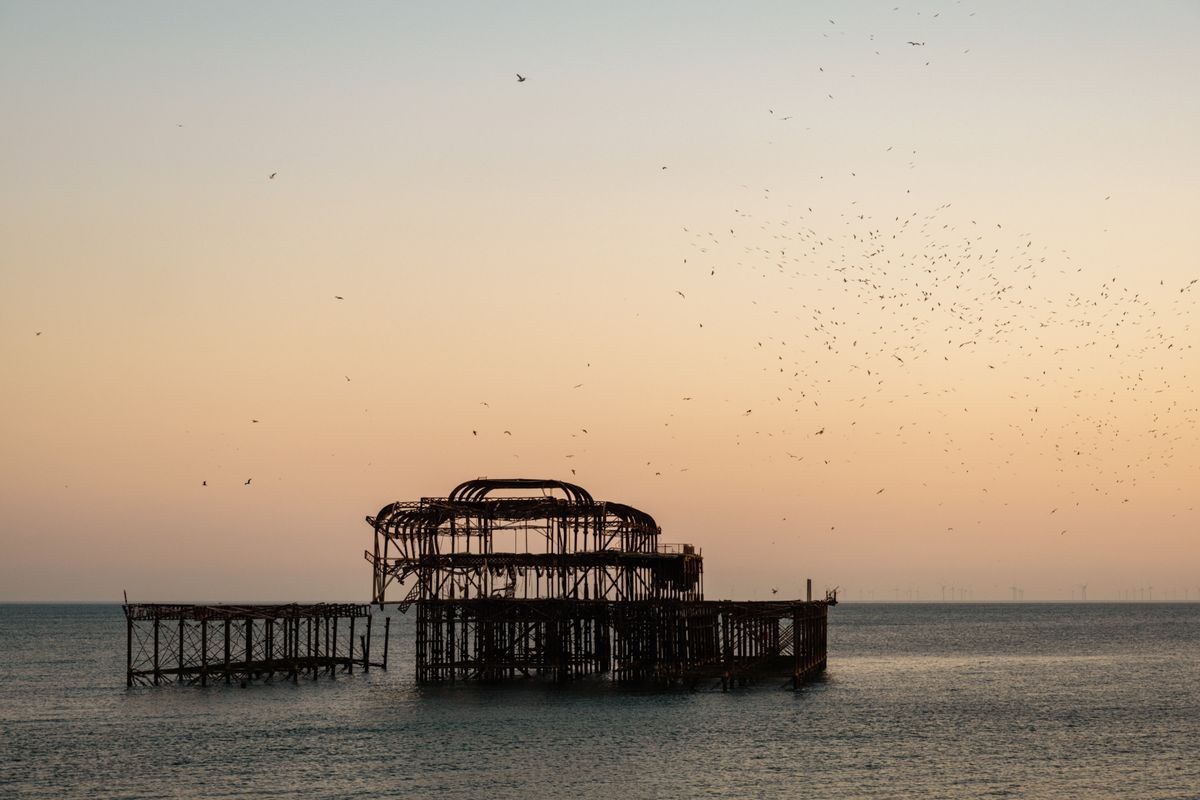
There are many reasons to fall in love with Brighton, writes Sara Darling, but mine is inextricably linked to the expanse of blue that leads to faraway lands. Dieppe might be almost 70 miles across the horizon, but we have plenty to keep us occupied on our side of the pond, which is punctuated by an imposing rusting hulk.
The West Pier’s skeleton flanks the view across the English Channel, and every day I am in awe of the altering backdrop which gives it a constantly changing personality throughout the day. The burnt-out girders have a long history, as mesmerising as the starlings who have now claimed her for their temporary home.
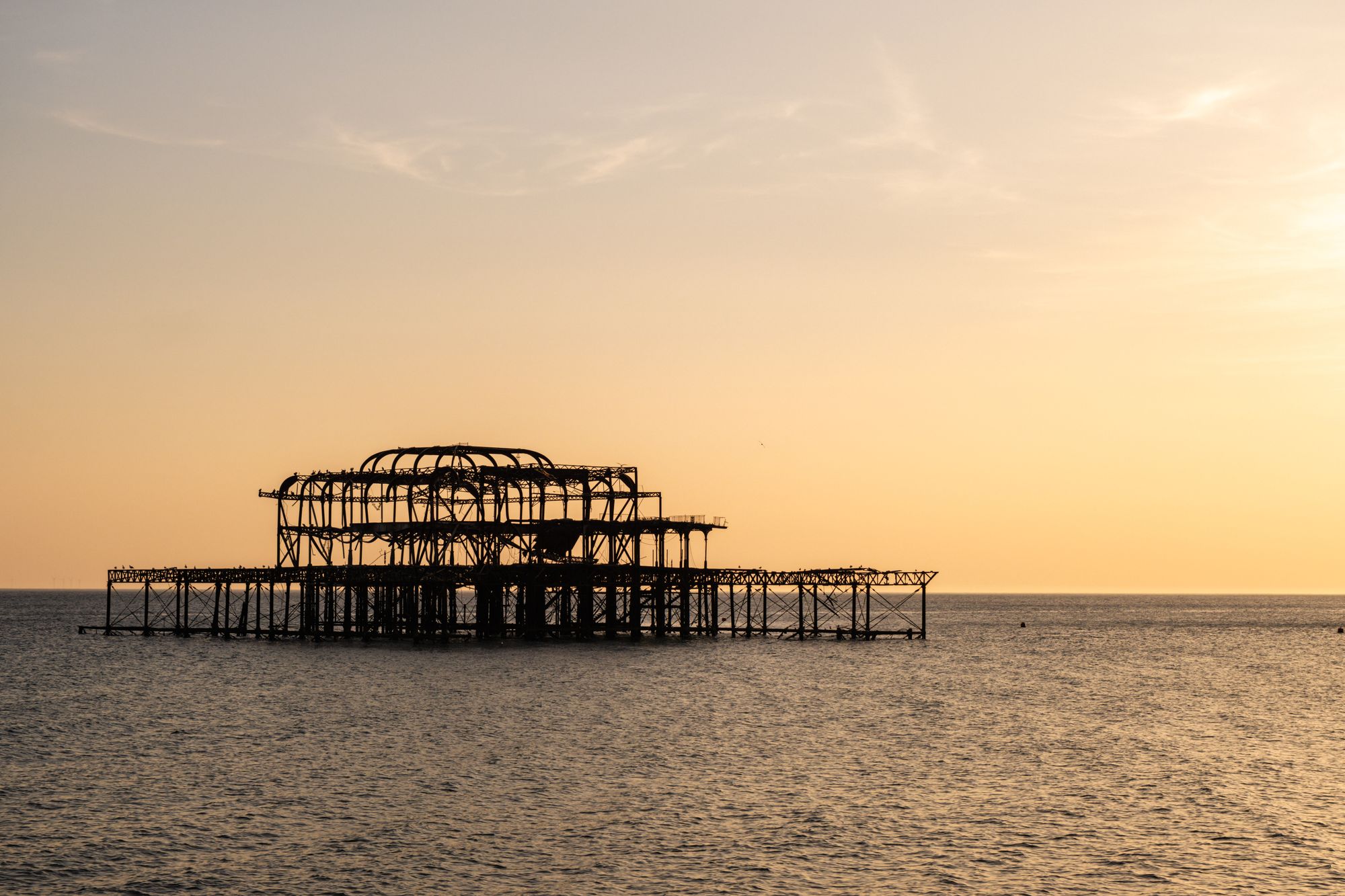
Taking thirty years to complete, it was an architectural marvel at the time, and pre-war, the middle classes flocked to enjoy the thrill of walking on water without the hazards of becoming wet or seasick. After the war it was the epitome of seaside cool with holidaymakers: more sophisticated than the piers at Margate, Clacton and Bournemouth, it epitomised “London-by-the-Sea” chic—popular with couples, families and friends who enjoyed spending their pennies on the arcade games or helter-skelter while being entertained by live music on the bandstand.
Brighton was renowned for decades as the ultimate British seaside resort, with the West Pier as its pinnacle—until the Mods and Rockers arrived. The infamous showdown in ‘64 over the Whitsun bank holiday was the beginning of the end for family feel-good vibes at the prom. Investors stepped up and lured holiday makers to new modern entertainment venues like the Curzon cinema and Top Rank, which became the places to be seen. It didn’t take long for the West Pier and its traditional amusement to be left behind, and without customers it lost its lustre, eventually closing in 1975.
Like a scorned child without any attention, the iconic structure which once represented frivolity and good times has rotted away.The sea became her nemesis, but she still stood proudly brooding. However, even before the first fire her forlorn framework was shedding of its own accord, the waves greedily snatching anything within their reach. Large sections of it collapsed during a storm in 2002, and the two attempts at arson in 2003 destroyed the remainder of the concert hall and arcades, but she is still hanging on thanks to those sturdy steel girders.
Hugely popular, the Pier is a tough old bird—one which countless people petitioned to restore. But, on 23 June 2004, high winds caused the middle of the pier to collapse completely leaving a gaping hole which resulted in the English Heritage declaring the pier to be beyond repair.
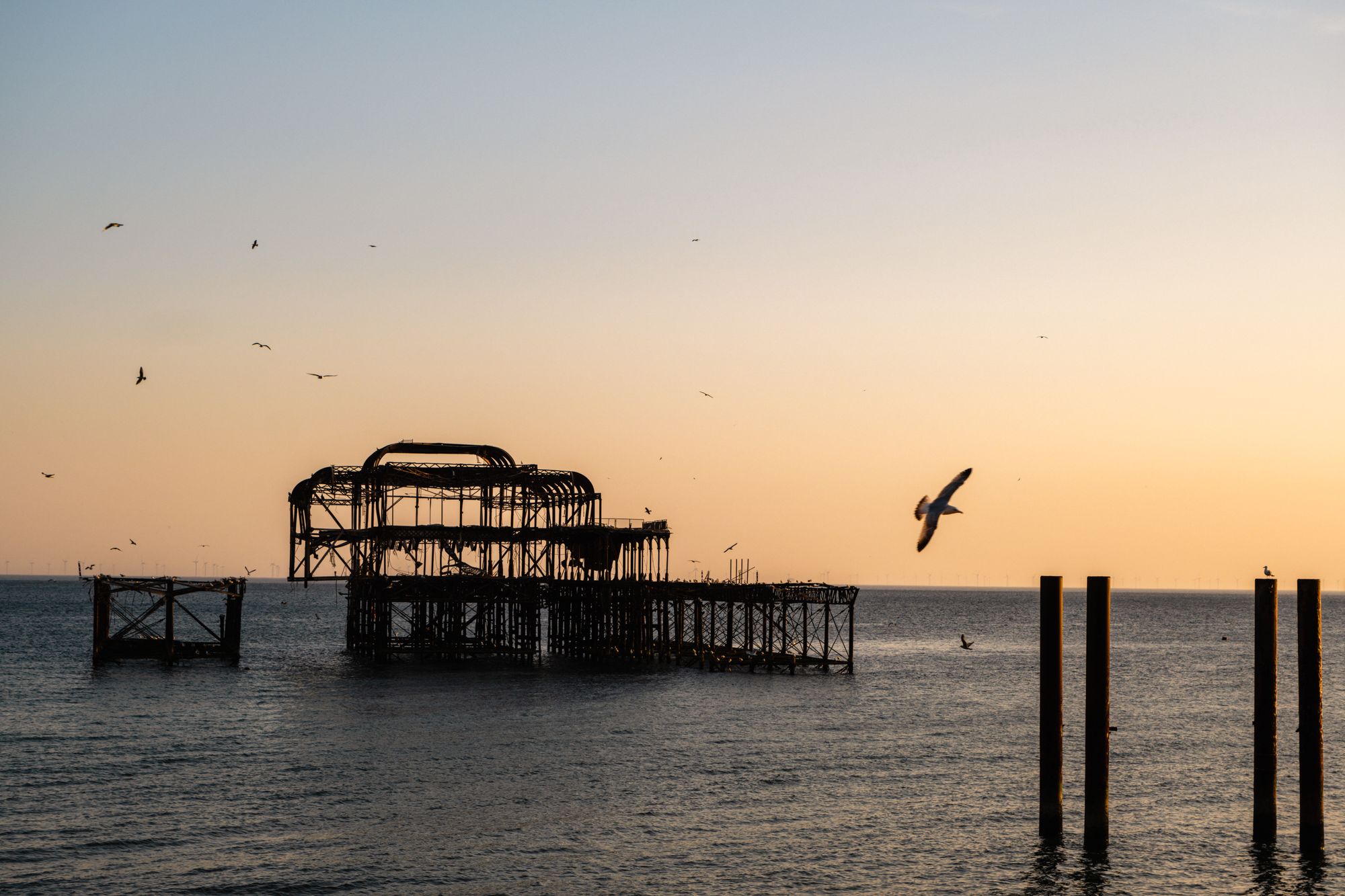
As long as I can remember, the silhouette of the pier has always been a beacon of the seas at the base of Regency Square. However, the British Airways i360 viewing pod with its statuesque height, and spaceship-shaped pod has been open to the public since 2016, and the 150-metre-high observation tower provides an impressive vista across Brighton, the South Downs and over the Channel from above. You are also rewarded with a bird’s eye view of the West Pier’s footprint and can imagine what it would have been like to be transported back to its heyday.
My fondest memory is being part of Brighton’s history, dancing under the stars with the West Pier as the backdrop for Fatboy Slim’s first free beach gig. Big Beach Boutique first took place in 2001 when the Pier was slightly more intact, and Cook drew a 40,000-strong crowd of revellers to the pebbles to rave in front of this Brighton institution. Bringing back parties to the beach was a 21st-century nod to the fun people used to have on the pier.
Whatever your memories of our most well-known skeleton, it is a remarkable feature of Brighton’s seafront—its desolate beauty is exaggerated by the stunning sunsets, piqued with a changing spectrum of orange, red, pink and blue. She can’t be rebuilt and she can’t be replicated—we just have to accept and respect her for what she is. With every day that passes those girders disintegrate more and more, being reclaimed by nature, so enjoy her while you still can.
Sara Darling is a freelance travel and lifestyle writer and podcast host. Follow her adventures on Twitter and Instagram at @wordsbydarling.
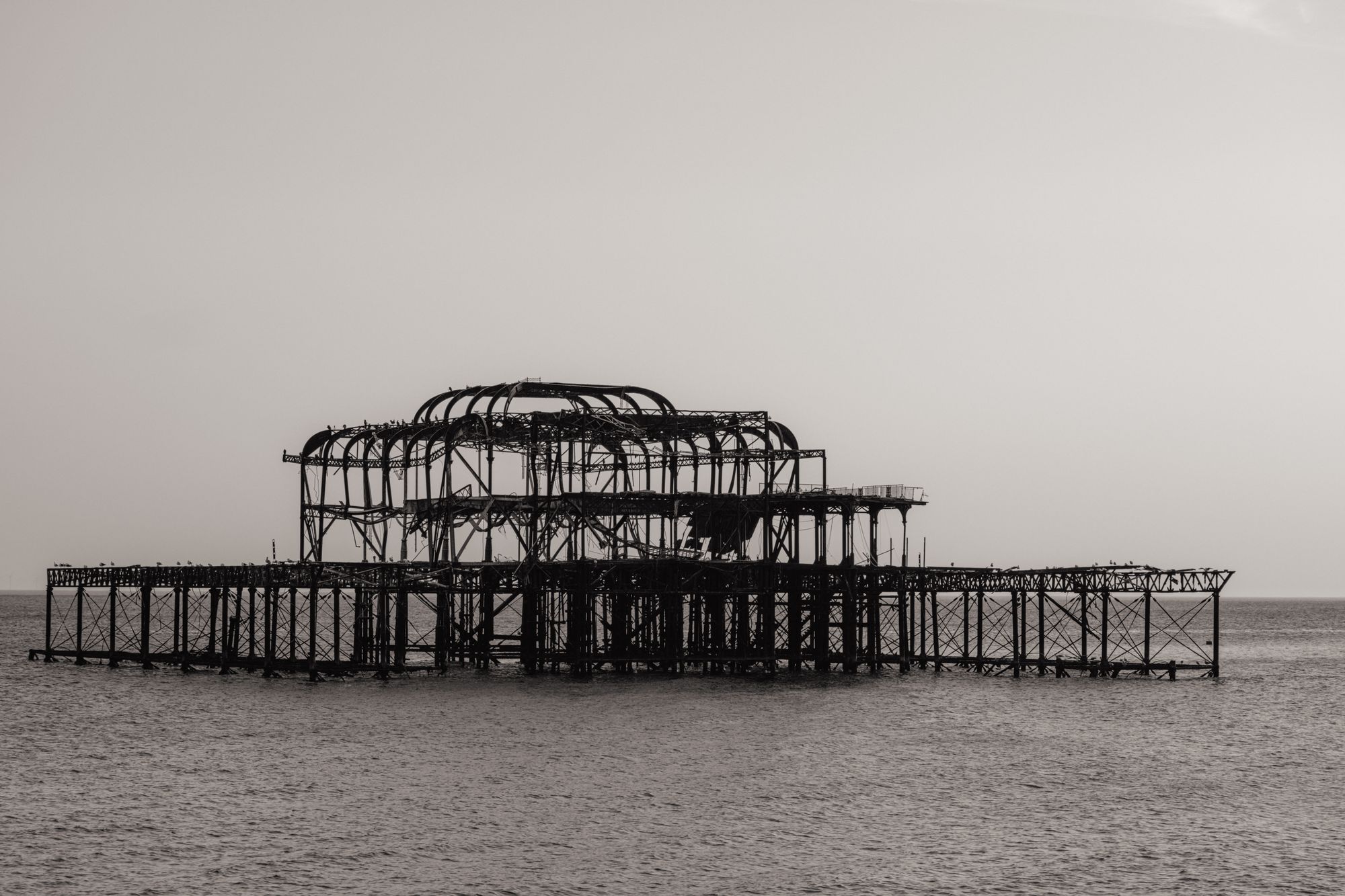

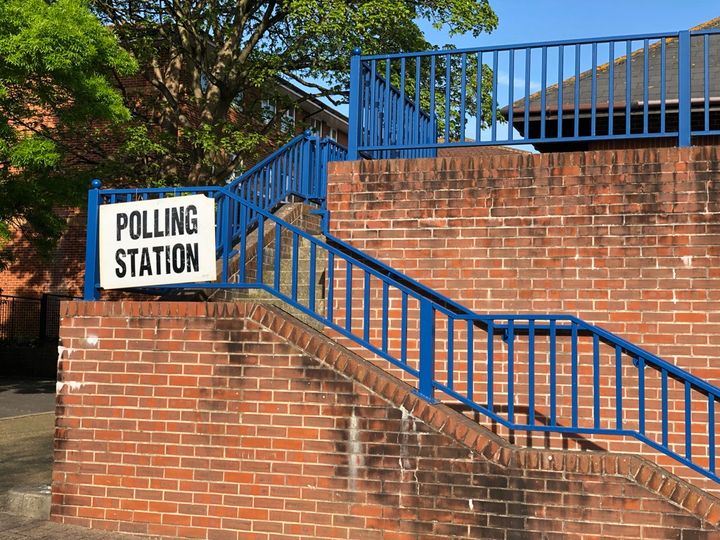
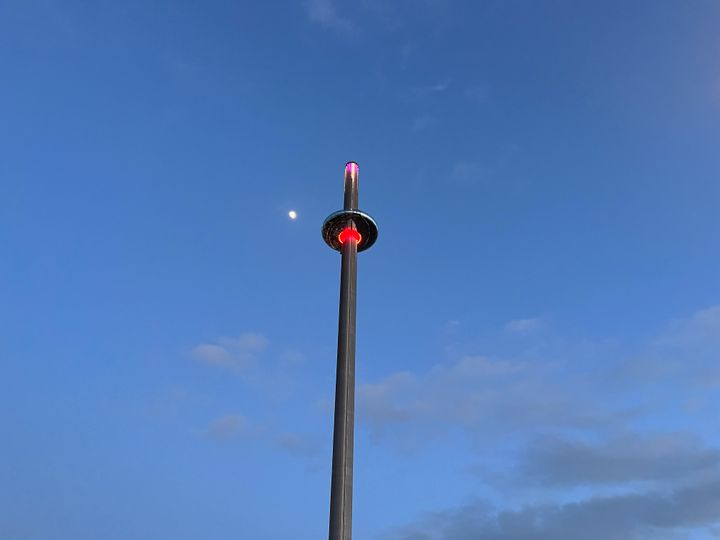
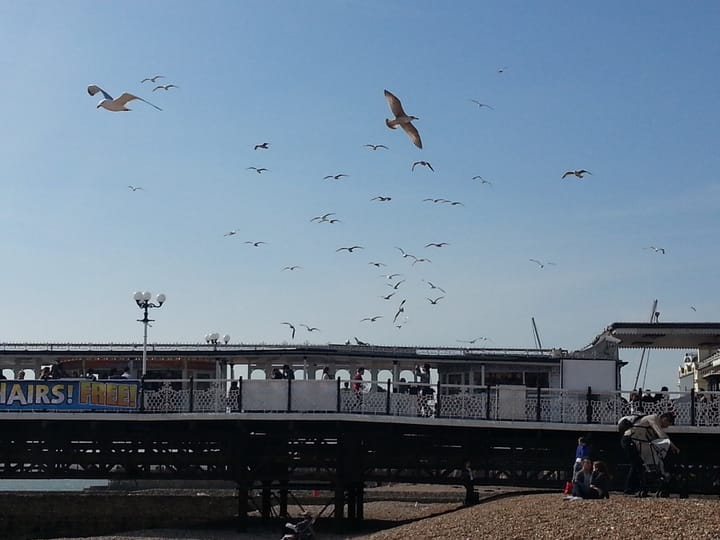
Comments ()